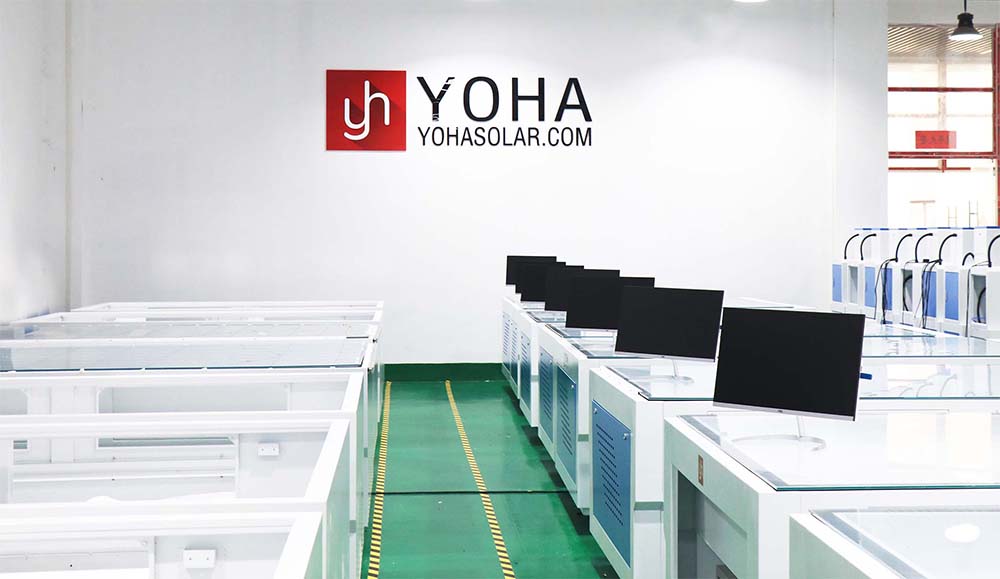At this critical juncture where the PV industry advances towards grid parity and high-quality development, module inspection and technical standards function like dynamically interlaced double helices, jointly propelling the continuous enhancement of industrial efficiency. Inspection serves as the practical implementation vehicle for standards, while standards provide the technical framework for inspection. Technological innovation in inspection equipment is dramatically enhancing the precision, efficiency, and intelligence of inspections with unprecedented force, driving the ongoing evolution of the standards system, and ultimately empowering cost reduction and efficiency gains across the entire industry chain.
The Anchor: Standards Defining Quality and Efficiency Baselines
PV module inspection is not an isolated activity; its core foundation lies in a comprehensive system of international and domestic standards (e.g., IEC 61215, IEC 61730). These standards:
- Set Performance Thresholds: Define methods for power rating (based on IV testing) and efficiency class grading rules, ensuring market fairness.
- Establish Reliability Baselines: Specify stringent conditions and pass/fail criteria for environmental tests (damp heat, thermal cycling, mechanical load, etc.), guaranteeing over 25 years of stable operation.
- Mandate Safety Requirements: Strictly define electrical safety metrics (insulation, fire resistance, dielectric withstand), safeguarding power plants and personnel.
- Respond to Technological Advancements: Continuously updated to incorporate specialized testing requirements for bifacial modules, lightweight modules, and emerging cell technologies (e.g., perovskite).
This standards system establishes a unified quality language and efficiency benchmark for the industry. Precise, efficient, and reliable inspection equipment is the critical executor ensuring the effective implementation of these standards.
Technological Innovation: Enabling More Precise, Efficient, and Intelligent Standard Compliance
Breakthroughs in inspection equipment are profoundly transforming how standards are executed and their effectiveness, becoming a core engine for industry-wide efficiency gains:
-
"Ultra-Micro" Precision Breakthroughs: Solidifying Standard Credibility
- IV Testing: Next-generation equipment utilizes high-precision digital source meters, low-drift circuits, and advanced algorithms, reducing power measurement uncertainty from ±1.5% to below ±0.5%. This not only meets but surpasses the stringent accuracy demands of the latest standards, enabling precise capture of subtle performance differences in high-efficiency modules (TOPCon, HJT), eliminating "power overstatement," and providing a credible data foundation for the efficiency race.
- EL/PL Imaging: Micron-level high-resolution imaging combined with intelligent image processing clearly identifies defects previously difficult to detect (micro-cracks, micro-broken fingers), significantly improving the accuracy of assessing "no severe defects" per standards, enhancing long-term reliability at the source.
-
"Integrated" Testing Solutions: Accelerating Standards Validation
- Multi-Environmental Factor Coupling Simulation: Advanced reliability testers overcome limitations of single-factor simulation, achieving synchronous, precise control and coupled loading of multiple factors (temperature, humidity, irradiance, mechanical stress). This drastically shortens sequential test cycles required by standards (e.g., damp heat + mechanical load sequence), significantly boosting test efficiency and accelerating new product certification and mass production ramp-up.
- Online High-Speed Inspection: Automated inline systems (high-speed IV + EL) enable 100% inspection during production, completing single-component testing in milliseconds, ensuring 100% compliance of shipped products with power and appearance standards. This revolutionizes the inefficient traditional sampling model, deeply embedding standard execution into the manufacturing process, vastly improving production efficiency and quality control.
-
"AI + Big Data" Intelligent Analysis: Surpassing Standards, Anticipating Risks
- Intelligent Defect Diagnosis: Deep learning-based image recognition algorithms automatically analyze EL/PL images, classifying complex defects (e.g., intersecting cracks, specific process flaws) with accuracy and consistency far exceeding human capability, ensuring objective and efficient standards compliance assessment and reducing quality loss costs.
- Data Correlation & Prediction: Integrating IV curves, EL images, process parameters, and reliability test data into big data analytics platforms allows AI models to predict potential degradation trends, failure modes, and even simulate long-term performance in specific climates. This surpasses the pass/fail binary judgment of current standards, enabling predictive quality control and providing forward-looking insights for optimizing design and processes, enhancing product lifecycle value.
- Automated Standards Compliance: Intelligent systems automatically compare test results against standard limits and generate compliance reports, drastically shortening certification cycles and enhancing standards execution efficiency.
The Efficiency Engine: Powering Value Upgrade Across the Value Chain
The tight integration of precise, efficient, intelligent inspection technology and stringent standards radiates value throughout the PV ecosystem:
- Manufacturing: Real-time, precise inspection data provides immediate feedback for process optimization (e.g., soldering, lamination), accelerating technology adoption; 100% inspection under high standards strictly controls product consistency, significantly reducing after-sales risks and quality costs.
- Power Plant Operations: The module "performance passport" issued based on strict standards and high-precision inspection is the cornerstone for accurate power generation modeling, efficient O&M, project financing, and trading, maximizing lifecycle return on investment.
- Industry Ecosystem: Unified, advanced, and efficiently executable inspection standards promote fair competition among technologies, enhance overall market trust in PV products, lower transaction costs, and drive healthy, sustainable industry growth.
Conclusion: The Perpetual Evolution of the Dual Helix
PV module inspection and standards are not static regulations. They form a continuously evolving "double helix," driven by technological innovation. Every leap in inspection precision, breakthrough in efficiency, and upgrade in intelligence pushes the standards system towards greater stringency, scientific rigor, and operational efficiency. Conversely, the formulation of higher standards spurs further innovation in inspection technology. This virtuous cycle continuously reinforces the bedrock of PV module quality, elevates the operational efficiency of the entire industry chain, and reduces the levelized cost of electricity (LCOE). On the path towards achieving the "dual-carbon" goals, continuously evolving inspection technologies and standards systems will remain a core driving force, propelling the PV industry steadily forward on its high-quality development journey, precisely unlocking the maximum value from every ray of sunlight.
keywords:
 Chinese
Chinese
 English
English
 Chinese
Chinese
 English
English

